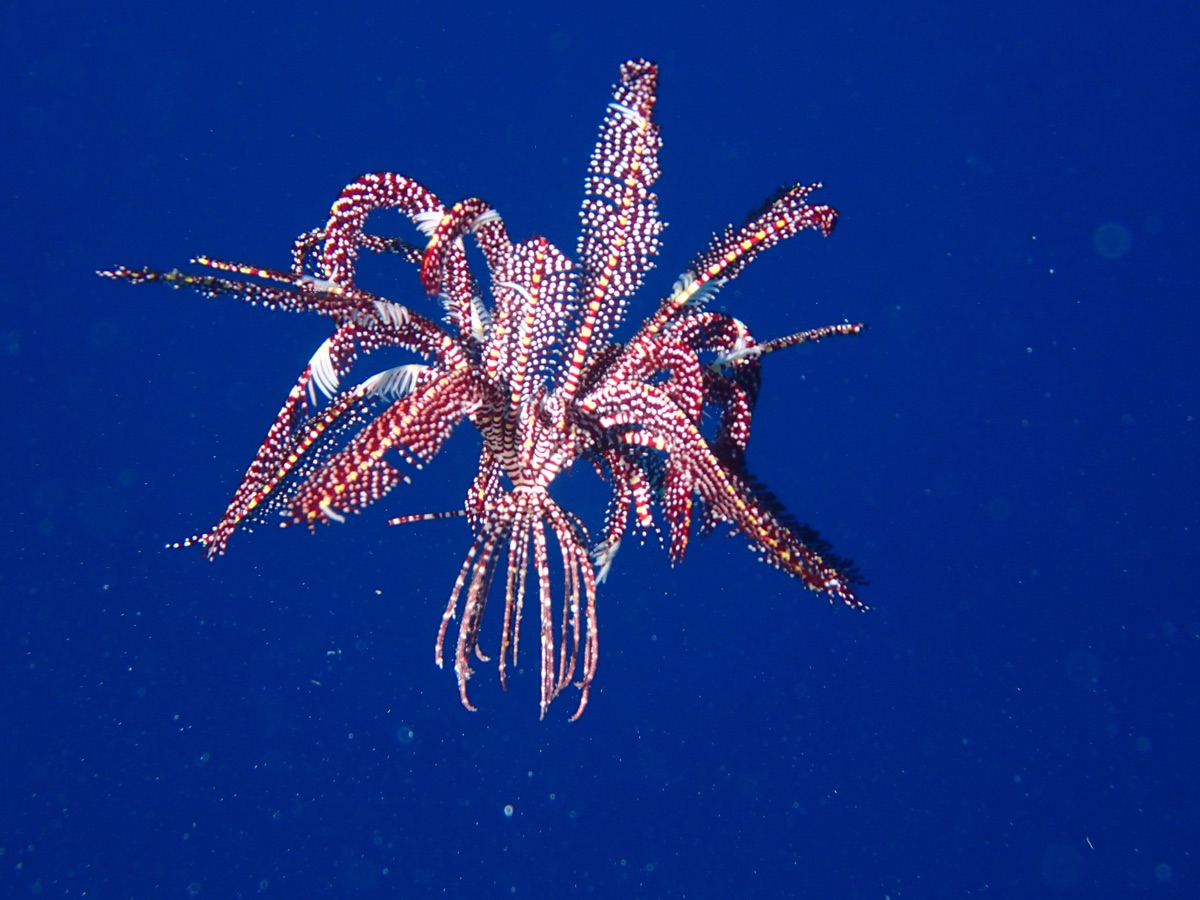Sea Lilies on Twitter Are Mesmerizing … And Not What They Seem
Odd-looking and gracefully mesmerizing plant-animal creatures are having a moment on Twitter: Some look like swimming feather dusters or fluffy, undulating mops. Others look like seaweed or the kind of plastic plants that decorate the aquariums in dentists' waiting rooms.
But what they are is much, much weirder.
Crinoids, also known as feather stars or sea lilies, are animals, despite their plant-like appearance. They've been around for at least 490 million years, and possibly more than 500 million, according to the Kansas Geological Survey. (As the long-ago site of a shallow inland sea, Kansas boasts numerous crinoid fossils.)
Though these creatures came into the spotlight on Twitter only recently, thanks to GIFs and images posted by diving enthusiasts, sea lilies' real heyday was between about 359 million and 323 million years ago, during what geologists call the Mississippian period. Sea levels were high during this time, creating shallow oceans over the northern continents. It was paradise for crinoids, which reached their peak level of diversity during this time, according to a 2006 paper in the journal Palaios. About 250 million years ago, though, nearly all crinoid species died in the Permian mass extinction, in which 95 percent of life on Earth also died off. A "skeleton crew" of crinoid lineages survived, however, according to a 2014 analysis of sea life after the die-off.
From this skeleton crew arose the crinoids that still ply the oceans today. They're most common in relatively shallow waters, but can thrive at depths of up to 29,578 feet (9,000 meters), where varieties that attach themselves to the ocean floor via a long stalk have been discovered. These sessile, or nonmobile, crinoids are known as sea lilies.
Versions that swim freely are more often called feather stars. Like sea stars, these creatures are echinoderms, a group of marine animals that are usually radially symmetrical, like a wagon wheel or many types of flowers. The animals feed by filtering tiny particles out of the water, and they reproduce by releasing sperm or eggs out into the current. Fertilization produces larvae that swim freely for a few days and then, in most species, attach themselves via stalk to the ocean floor.

Sea lily varieties stay tied down, but feather stars regain a little bit of mobility as they grow up. Some can creep along the ocean floor with tentacle-y legs called cirri. Others flutter through the water, propelling themselves by moving their feeding arms like bunch of synchronized feather boas.
Sign up for the Live Science daily newsletter now
Get the world’s most fascinating discoveries delivered straight to your inbox.
Crinoids don't do well in aquariums, according to a 2013 article in Advanced Aquarist magazine. Their stalks and arms are too fragile and tend to tear apart when handled, meaning that it's difficult to collect or ship the animals without injuring them. Feeding them in an aquarium is all but impossible, given that different species require different types of food in quantities large enough to destroy a tank's water quality, according to the Advanced Aquarist article.
To see a crinoid up close, then, requires either scuba diving or rock hounding. Crinoids were so abundant during the Paleozoic era (which started 544 million years ago and ended with the Permian mass extinction) that their fossils are everywhere. North American and European limestones laid down in the Mississippian period are a fertile fossil-hunting source. The fossils can also be found in rocks dating from the Pennsylvanian period (323 million to 290 million years ago) and the Permian (298 million to 250 million years ago).
Many crinoid fossils preserve just the stem in a variegated cylinder about the diameter of a pencil. Other fossils preserve the arms in an elaborate flower-like design. Ancient crinoids could grow to massive sizes. According to the fossil-sale website Fossil Era, the largest fossil crinoid ever discovered had a stem 130 feet (40 m) long.
Original article on Live Science.

Stephanie Pappas is a contributing writer for Live Science, covering topics ranging from geoscience to archaeology to the human brain and behavior. She was previously a senior writer for Live Science but is now a freelancer based in Denver, Colorado, and regularly contributes to Scientific American and The Monitor, the monthly magazine of the American Psychological Association. Stephanie received a bachelor's degree in psychology from the University of South Carolina and a graduate certificate in science communication from the University of California, Santa Cruz.









